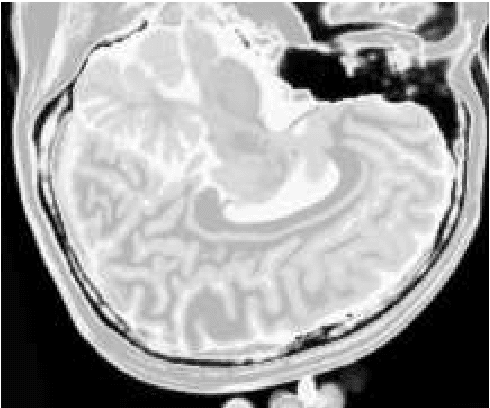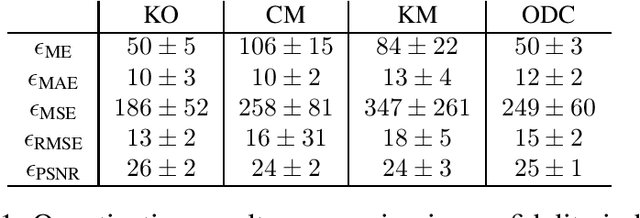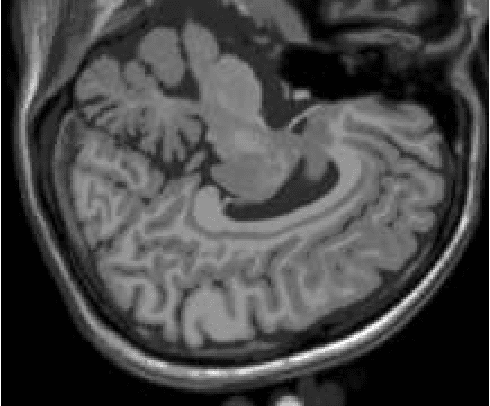Ricardo Emmanuel de Souza
Avaliação da doença de Alzheimer pela análise multiespectral de imagens DW-MR por redes RBF como alternativa aos mapas ADC
Dec 03, 2017Abstract:Alzheimer's disease is the most common cause of dementia, yet difficult to accurately diagnose without the use of invasive techniques, particularly at the beginning of the disease. This work addresses the classification and analysis of multispectral synthetic images composed by diffusion-weighted magnetic resonance brain volumes for evaluation of the area of cerebrospinal fluid and its correlation with the progression of Alzheimer's disease. A 1.5 T MR imaging system was used to acquire all the images presented. The classification methods are based on multilayer perceptrons and classifiers of radial basis function networks. It is assumed that the classes of interest can be separated by hyperquadrics. A polynomial network of degree 2 is used to classify the original volumes, generating a ground-truth volume. The classification results are used to improve the usual analysis by the map of apparent diffusion coefficients.
* in Portuguese
Dialectical Multispectral Classification of Diffusion-Weighted Magnetic Resonance Images as an Alternative to Apparent Diffusion Coefficients Maps to Perform Anatomical Analysis
Dec 03, 2017



Abstract:Multispectral image analysis is a relatively promising field of research with applications in several areas, such as medical imaging and satellite monitoring. A considerable number of current methods of analysis are based on parametric statistics. Alternatively, some methods in Computational Intelligence are inspired by biology and other sciences. Here we claim that Philosophy can be also considered as a source of inspiration. This work proposes the Objective Dialectical Method (ODM): a method for classification based on the Philosophy of Praxis. ODM is instrumental in assembling evolvable mathematical tools to analyze multispectral images. In the case study described in this paper, multispectral images are composed of diffusion-weighted (DW) magnetic resonance (MR) images. The results are compared to ground-truth images produced by polynomial networks using a morphological similarity index. The classification results are used to improve the usual analysis of the apparent diffusion coefficient map. Such results proved that gray and white matter can be distinguished in DW-MR multispectral analysis and, consequently, DW-MR images can also be used to furnish anatomical information.
Fuzzy-Based Dialectical Non-Supervised Image Classification and Clustering
Dec 03, 2017



Abstract:The materialist dialectical method is a philosophical investigative method to analyze aspects of reality. These aspects are viewed as complex processes composed by basic units named poles, which interact with each other. Dialectics has experienced considerable progress in the 19th century, with Hegel's dialectics and, in the 20th century, with the works of Marx, Engels, and Gramsci, in Philosophy and Economics. The movement of poles through their contradictions is viewed as a dynamic process with intertwined phases of evolution and revolutionary crisis. In order to build a computational process based on dialectics, the interaction between poles can be modeled using fuzzy membership functions. Based on this assumption, we introduce the Objective Dialectical Classifier (ODC), a non-supervised map for classification based on materialist dialectics and designed as an extension of fuzzy c-means classifier. As a case study, we used ODC to classify 181 magnetic resonance synthetic multispectral images composed by proton density, $T_1$- and $T_2$-weighted synthetic brain images. Comparing ODC to k-means, fuzzy c-means, and Kohonen's self-organized maps, concerning with image fidelity indexes as estimatives of quantization distortion, we proved that ODC can reach almost the same quantization performance as optimal non-supervised classifiers like Kohonen's self-organized maps.
Reconstruction of Electrical Impedance Tomography Using Fish School Search, Non-Blind Search, and Genetic Algorithm
Dec 03, 2017



Abstract:Electrical Impedance Tomography (EIT) is a noninvasive imaging technique that does not use ionizing radiation, with application both in environmental sciences and in health. Image reconstruction is performed by solving an inverse problem and ill-posed. Evolutionary Computation and Swarm Intelligence have become a source of methods for solving inverse problems. Fish School Search (FSS) is a promising search and optimization method, based on the dynamics of schools of fish. In this article the authors present a method for reconstruction of EIT images based on FSS and Non-Blind Search (NBS). The method was evaluated using numerical phantoms consisting of electrical conductivity images with subjects in the center, between the center and the edge and on the edge of a circular section, with meshes of 415 finite elements. The authors performed 20 simulations for each configuration. Results showed that both FSS and FSS-NBS were able to converge faster than genetic algorithms.
Evaluation of Alzheimer's Disease by Analysis of MR Images using Multilayer Perceptrons and Kohonen SOM Classifiers as an Alternative to the ADC Maps
Dec 03, 2017



Abstract:Alzheimer's disease is the most common cause of dementia, yet hard to diagnose precisely without invasive techniques, particularly at the onset of the disease. This work approaches image analysis and classification of synthetic multispectral images composed by diffusion-weighted magnetic resonance (MR) cerebral images for the evaluation of cerebrospinal fluid area and measuring the advance of Alzheimer's disease. A clinical 1.5 T MR imaging system was used to acquire all images presented. The classification methods are based on multilayer perceptrons and Kohonen Self-Organized Map classifiers. We assume the classes of interest can be separated by hyperquadrics. Therefore, a 2-degree polynomial network is used to classify the original image, generating the ground truth image. The classification results are used to improve the usual analysis of the apparent diffusion coefficient map.
 Add to Chrome
Add to Chrome Add to Firefox
Add to Firefox Add to Edge
Add to Edge